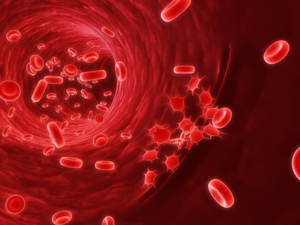- Home
- Medical news & Guidelines
- Anesthesiology
- Cardiology and CTVS
- Critical Care
- Dentistry
- Dermatology
- Diabetes and Endocrinology
- ENT
- Gastroenterology
- Medicine
- Nephrology
- Neurology
- Obstretics-Gynaecology
- Oncology
- Ophthalmology
- Orthopaedics
- Pediatrics-Neonatology
- Psychiatry
- Pulmonology
- Radiology
- Surgery
- Urology
- Laboratory Medicine
- Diet
- Nursing
- Paramedical
- Physiotherapy
- Health news
- Fact Check
- Bone Health Fact Check
- Brain Health Fact Check
- Cancer Related Fact Check
- Child Care Fact Check
- Dental and oral health fact check
- Diabetes and metabolic health fact check
- Diet and Nutrition Fact Check
- Eye and ENT Care Fact Check
- Fitness fact check
- Gut health fact check
- Heart health fact check
- Kidney health fact check
- Medical education fact check
- Men's health fact check
- Respiratory fact check
- Skin and hair care fact check
- Vaccine and Immunization fact check
- Women's health fact check
- AYUSH
- State News
- Andaman and Nicobar Islands
- Andhra Pradesh
- Arunachal Pradesh
- Assam
- Bihar
- Chandigarh
- Chattisgarh
- Dadra and Nagar Haveli
- Daman and Diu
- Delhi
- Goa
- Gujarat
- Haryana
- Himachal Pradesh
- Jammu & Kashmir
- Jharkhand
- Karnataka
- Kerala
- Ladakh
- Lakshadweep
- Madhya Pradesh
- Maharashtra
- Manipur
- Meghalaya
- Mizoram
- Nagaland
- Odisha
- Puducherry
- Punjab
- Rajasthan
- Sikkim
- Tamil Nadu
- Telangana
- Tripura
- Uttar Pradesh
- Uttrakhand
- West Bengal
- Medical Education
- Industry
New method to remove nanoparticles from blood with ease

Researchers, including those of Indian-origin, have developed a new technology that uses an oscillating electric field to easily and quickly remove nanoparticles from blood.
Engineers at the University of California, San Diego in US, evolved an electronic chip which could also serve as a general tool to separate and recover nanoparticles from other complex fluids for medical, environmental and industrial applications.
Nanoparticles, which are generally one thousand times smaller than the width of a human hair, are difficult to separate from plasma, the liquid component of blood, due to their small size and low density.
Traditional methods to remove nanoparticles from plasma samples, such as diluting the plasma or adding a high concentration sugar solution to the plasma and spinning it, either alter the normal behaviour of the nanoparticles or cannot be applied to some of the most common nanoparticle types.
"This is the first example of isolating a wide range of nanoparticles out of plasma with a minimum amount of manipulation," said Stuart Ibsen from the University of California, San Diego's NanoEngineering Department.
"We've designed a very versatile technique that can be used to recover nanoparticles in a lot of different processes," he said.
This new technology will help researchers to better monitor what happens to nanoparticles circulating in a patient's bloodstream.
This nanoparticle separation technology can also be used in the clinic to determine if the blood chemistry of a particular patient is compatible with the surfaces of certain drug-delivery nanoparticles, said researchers including Santosh Kesari, Professor of Neurosciences at UC San Diego School of Medicine and Rajesh Mukthavaram, Assistant Project Scientist at UC San Diego.
The dime-sized electric chip contains hundreds of tiny electrodes that generate a rapidly oscillating electric field that selectively pulls the nanoparticles out of a plasma sample.
"It's amazing that this method works without any modifications to the plasma samples or to the nanoparticles," Ibsen added.
Engineers at the University of California, San Diego in US, evolved an electronic chip which could also serve as a general tool to separate and recover nanoparticles from other complex fluids for medical, environmental and industrial applications.
Nanoparticles, which are generally one thousand times smaller than the width of a human hair, are difficult to separate from plasma, the liquid component of blood, due to their small size and low density.
Traditional methods to remove nanoparticles from plasma samples, such as diluting the plasma or adding a high concentration sugar solution to the plasma and spinning it, either alter the normal behaviour of the nanoparticles or cannot be applied to some of the most common nanoparticle types.
"This is the first example of isolating a wide range of nanoparticles out of plasma with a minimum amount of manipulation," said Stuart Ibsen from the University of California, San Diego's NanoEngineering Department.
"We've designed a very versatile technique that can be used to recover nanoparticles in a lot of different processes," he said.
This new technology will help researchers to better monitor what happens to nanoparticles circulating in a patient's bloodstream.
This nanoparticle separation technology can also be used in the clinic to determine if the blood chemistry of a particular patient is compatible with the surfaces of certain drug-delivery nanoparticles, said researchers including Santosh Kesari, Professor of Neurosciences at UC San Diego School of Medicine and Rajesh Mukthavaram, Assistant Project Scientist at UC San Diego.
The dime-sized electric chip contains hundreds of tiny electrodes that generate a rapidly oscillating electric field that selectively pulls the nanoparticles out of a plasma sample.
"It's amazing that this method works without any modifications to the plasma samples or to the nanoparticles," Ibsen added.
Next Story


